Welcome to Doom9's Forum, THE in-place to be for everyone interested in DVD conversion. Before you start posting please read the forum rules. By posting to this forum you agree to abide by the rules. |
|
|
#30983 | Link | ||
|
Registered User
Join Date: Dec 2008
Posts: 496
|
Quote:
Original 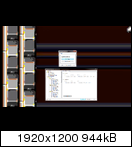 FineSharp no LL (with your settings) 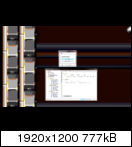 FineSharp with LL (with your settings) 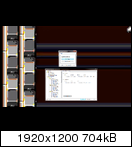 For comparisons to really make sense, people need to also do screenshots and show them here. For some reason, the newly introduced features very rarely if at all are really looked at in detail with screenshots. I really would have loved to read some feedback on FineSharp from 6233638 and cyberbeing, too. As for your questions regarding "low", "medium" and "high", I found that strength "0.2", "0.5" and "1.0" are giving the perfect mix. 0.2 is very mild sharpening (transparent enough to be completely natural), 0.5 is medium sharping (still very natural) and 1.0 is very visible sharpening, where you really need the extra "oomph" for bringing out details (but you can tell it's been sharpened). If you go any higher, you get very visible artefacts up to the point where it gets quite distracting (2.0 already rings like crazy, 1.5 is also not satisfactory). The thinning parameter is a bit difficult to be honest, I settled on "0.020" for all strengths, because higher values than that give artefacts. You can easily tell when you test with "0.100", which looks horrible. So be careful with that setting. Quote:
5) As an additional note, it only happens when you have enabled "always - if upscaling is needed" on quadrupling, if you enable "only if scaling factor is XX" this does not happen. Seems like a corner case related to that "always ..." option that isn't handled correctly. If you really cannot reproduce it, which I doubt, since I am using default settings, I will add it to the bug tracker. Last edited by iSunrise; 13th June 2015 at 18:46. |
||
|
|

|
|
|
#30984 | Link |
|
Registered User
Join Date: Apr 2008
Posts: 546
|
It seems that directx 11 is more demanding than directx 9 path. With madvr 0.88.11 or 0.88.8 and this video https://www.youtube.com/watch?v=sLprVF6d7Ug (I have downloaded 8k movie), I have lotsd of presentation glitch with dx11 patch and not with dx9 path
1) dx9 + deband filter + chroma upscaling (bicubic 100) + image downscaling (CR/AAR/SLL) : no presentation glitch dx11 + deband filter + chroma upscaling (bicubic 100) + image downscaling (CR/AAR/SLL) : lots of presentation glitch 2) dx9 + no deband filter + chroma upscaling (bicubic 100) + image downscaling (CR/AAR/SLL) : no presentation glitch dx11 + no deband filter + chroma upscaling (bicubic 100) + image downscaling (CR/AAR/SLL) : no presentation glitch 3) dx9 + no deband filter + chroma upscaling (jinc) + image downscaling (CR/AAR/SLL) : no presentation glitch dx11 + no deband filter + chroma upscaling (jinc) + image downscaling (CR/AAR/SLL) : no presentation glitch 4) dx9 + no deband filter + chroma upscaling (jinc AR) + image downscaling (CR/AAR/SLL) : no presentation glitch dx11 + no deband filter + chroma upscaling (jinc AR) + image downscaling (CR/AAR/SLL) : lots of presentation glitch With my 1080p videos, there aren't presentation glitchs with dx11 patch. Last edited by ikarad; 13th June 2015 at 19:23. |
|
|

|
|
|
#30985 | Link | |
|
Registered User
Join Date: Aug 2013
Posts: 5
|
  Quote:
|
|
|
|

|
|
|
#30986 | Link |
|
Registered User
Join Date: Dec 2010
Posts: 62
|
Quote:
I guess your preference for "quite low" strength settings may be a result of your no LL preference (regarding EE/ringing). Or maybe you use it in another context (not as Image Enhancement for HQ content (e.g. high bitrate BluRay). Or type of display...so many variables Changes in parameters with FineSharp work gradually from what I can see - no big jumps. I agree with you that thinning of 0.02 is a good sweetspot for all practical strengths. I don't agree about the suggested 0.2/0.5/1.0 strengths. In my opinion FineSharp starts "to matter" at something like 1.0 (why bother with additional processing/artificial sharpening when the effect is hardly perceivable as is the case with 0.2 strength?) The upper limit = High Setting should be between 2.0 and 2.4 in my opinion. With LL I have found this range to give very good results with very good source material (very little artifacting/EE/ringing to begin with, sources with inherent ringing/artifacting will look horrible with this high setting though). 2.2 seems like a good compromise - right in the middle. Last edited by TheLion; 13th June 2015 at 20:08. |
|
|

|
|
|
#30987 | Link |
|
Registered User
Join Date: Apr 2014
Posts: 13
|
Finesharp: It is quite interesting IMO. It produces a completely different look than LumaSharpen, and I think its up to personal preference. As for me, I like finesharp for doing a bit of a touchup. LSharpen has better effect for more sharpening, if I want that.
Repair at 1 looks great, found no problems. Thinning: lower than 0.025, thats sure, I like it most between 0.018 and 0.02. As for strength: 2.2 seems to be good for high preset for me too. For mid I would go with 1.4, and 0.9-1.1 for low. I didnt test LL much, but I do prefer it on with anime. |
|
|

|
|
|
#30988 | Link | ||
|
Troubleshooter
Join Date: Feb 2014
Posts: 339
|
Quote:
What gpu (Nvidia, AMD, Intel) are you using? Do you have any hardware acceleration set in LAV, or are using the none setting in the LAV video decoder settings? What are you using for your upscaler and downscalers? What is the resolution of the video you are viewing (I see your settings are using a rule for 576p video)? Do you get the same results for Linear Light in FineSharp image enhancement and upscaling refinement, or only only one of the two? Extending on that do you have the same problem is you enable liner light for other things (like in the image upscaling or downscaling areas)? Quote:
__________________
System specs: Sager NP9150 SE with i7-3630QM 2.40GHz, 16 GB RAM, 64-bit Windows 10 Pro, NVidia GTX 680M/Intel 4000 HD optimus dual GPU system. Video viewed on LG notebook screen and LG 3D passive TV. |
||
|
|

|
|
|
#30989 | Link | |
|
Registered User
Join Date: Dec 2008
Posts: 496
|
Quote:
The following is a screenshot of your original sample to demonstrate. I zoomed in so I can better explain the differences. Original image:  Now, this is with finesharp active, strength 2.0, no LL: 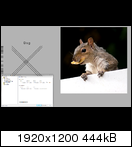 The strength of "2.0" already does so much sharpening to the image that it shows you exactly what you would expect. It amplifies the picture details and thus, it will also show you compression artefacts a lot stronger than before. The diagonal lines now have a white glow around them, which is because there were already quite strong visible compression artefacts that you can see when you zoom into the lines and they get "amplified" by the amount of sharpening you did. So what does this mean? It means that no LL shows you _exactly_ what you did, it shows you the oversharpening transparently, which is why the diagonal lines look oversharpened. Now, if you take a look at the squirrel (which actually resembles real image content a lot more) it still looks completely natural, although oversharpened, caused by the high strength settings. Now, this is what happens when I turn on LL: 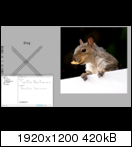 1) The squirrel image now has very visible artefacts (I marked them) and it looks unnaturally sharpened. 2) What's interesting is that the effects of finesharp with LL for some reason do soften up the visible compression artefacts around the black diagonal lines, so much that it almosts acts like a de-amplification of the sharpener itself, it acts like it masks the sharpening effect. However, this is not what you would expect when you sharpen an image, especially not with the diagonal lines that are already artefacting (compression related) and also should get sharpened up. However, this effect is also not translating to the squirrel image, which is full of artefacts, meaning, you're not only oversharpening and masking, but LL also adds some very weird artefacts to the squirrel that are not part of the original image of the squirrel (look at the red arrows). So the conclusion is, 2.0 is way too high and not recommended, as it amplifies the image way too much and causes side-effects. Second conclusion, LL produces some weird image artefacts, masks things you don't necessarily want to be masked, while no LL looks and works exactly as you would expect it to. For completess sake, here's the same image with strength "1.0" and no LL: 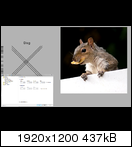 You can test it for yourself, if you want to be sure. If you turn down your strength from "2.0" to about "1.0" the diagonal lines look perfectly fine with no LL. This is because you didn't oversharpen the image, which is why I didn't recommend to use "2.0". "1.5" is already overdoing it IMHO. BTW, always use some comparison tool where you can quickly swap between the images, manually. A browser with tabs works, or use StaxRips comparison tool, very handy. Last edited by iSunrise; 13th June 2015 at 21:59. |
|
|
|

|
|
|
#30990 | Link |
|
Guest
Posts: n/a
|
So do people like FineSharp more than LumaSharpen? I began to really like LumaSharpen in just about any quality content, but at lower-than-default settings for both strength and clamp.
I still keep gettiing occassional stutters, up to 10-15 times during a 45 minute video. It does create dropped and repeated frames during those stutters. I am still unable to figure out what is causing it... Can I provide some log or something? I have very slow upload speed of 512Kbits/second, so if the log is huge, I won't be able to upload it. |

|
|
|
#30991 | Link |
|
Registered User
Join Date: Dec 2010
Posts: 62
|
Quote:
Zooming in on a test chart/picture like that to show the effect of sharpening filters will always tend to look "oversharpened". As you mention this content itself contains quite alot of artifacts. In total I would say LL on deals much more "gracefully" with this picture than LL off. The minimal pixel level differences in the sqirrel aren't significant in my opinion, even on a zoomed screenshot. I sit at 1.1x screen widths from a 10 foot wide screen and a rather high end DLP projector in a bat cave. I can assure you that - in motion - with high quality content strength 2.0-2.4 is the upper limit of what I consider practical (I suggested it as High setting), while certainly remaining one of the more natural "sharpening"/contrast enhancement filters out there. It doesn't strike me as "oversharpened", and I consider myself rather sensible to that. FineSharp is one of the very few filters I can stand. And in motion with good quality content I also consistently prefer LL On. It gives a slightly different look, which I prefer. It seems that the vast majority agrees. |
|
|

|
|
|
#30992 | Link |
|
Registered User
Join Date: Dec 2008
Posts: 496
|
It shouldn't give you a different look. If it gives you a different look then that is not what we want. We want the same picture information, just amplified so it will look sharper. That's why it's called FineSharp. It's there to make fine details sharper, a graceful sharpener. We want to always choose the most accurate algorithm for a specific goal in mind, in this case we want a sharpener and not a tool that does sharpen, but also harms the picture in lots of other ways. Especially not if no LL doesn't produce these weird image artefacts. The negative effects of LL will get even more visible on low-resolution content if you upscale it. That's what my samples show and your samples show them, too.
The problem with most of people's tests is that they see that something is different and they instantly like it. madVR is about an accurate reproduction of what you feed it (accurate source reproduction). It's important that we settle on something that works for everyone and for that you have to prove that something is worth it or not worth it with actual real word samples. If you can provide screenshots that show real benefits of LL in actual image content, which I doubt, it should be prefered, otherwise it adds unnecessary artefacts which are not there with no LL. The squirrel perfectly shows that no LL is more accurate. And there's a clear conflict, because you now tell me that LL is still prefered, which it clearly isn't, if you compared the images I took about 30 minutes to do. This is how we did came this far, by judging based on some actual facts instead of "what I like best is what must be best". You cannot just simply ignore one thing and then end the discussion with something like "the majority" agrees. The "majority" hasn't even shown some screenshots to compare. There's very few people left, apparently, that take their time to let everyone take part in comparisons. That's how it was done in the past, that's how it should be done. Let's hope other people take their time, too, and provide samples and screenshots. Last edited by iSunrise; 13th June 2015 at 23:20. |
|
|

|
|
|
#30993 | Link |
|
Troubleshooter
Join Date: Feb 2014
Posts: 339
|
When I first compared FineSharp and LumaSharpen I thought they had different effects (things they altered), but when I just did a quick test I didn't notice a significant difference with the content I tested. LumaSharpen seems to be less taxing (from a render speed perspective) than FineSharp. I'll do more extensive testing of LumaSharpen after madshi declares FineSharp testing complete, and asks us to move on to LumaSharpen.
__________________
System specs: Sager NP9150 SE with i7-3630QM 2.40GHz, 16 GB RAM, 64-bit Windows 10 Pro, NVidia GTX 680M/Intel 4000 HD optimus dual GPU system. Video viewed on LG notebook screen and LG 3D passive TV. |
|
|

|
|
|
#30995 | Link | |
|
Registered User
Join Date: Dec 2010
Posts: 62
|
Quote:
Both LL On and Off give a SLIGHTLY different look, and both obviously look vastly different from the original (FineSharp off). I can see why you interpret LL off as more "accurate" (as in "does what I would expect a traditional sharpening filter to do with the original) by those zoomed screenshots. But if you really insist on discussing those screenshots again, here is my take: With your example I don't have any preference pro contra LL whatsoever. Those minor single pixel deviations are completely insignificant in my opinion - even in this zoomed screenshot scenario, let alone real world video content. To call them "weird image artifacts" and "more accurate to the original" is not my interpretation at all. When I look at the sqirrel chart I vastly prefer the overall results with LL on. Call it "inaccurate", filtered, over-shoot compensated, whatever. The ringing/EE is dealt with much more "gracefully", while the "more representative of real video content" squirrel image shows again - in my opinion - completely insignifcant deviations in single pixels. I am certainly not opposed to your objective approach of comparing pixels in zoomed screen captures (afterall I was one of those wasting way too much time @avs during the format/screen cap war comparing countless VC-1/AVC shots...), but in this case I still prefer LL on overall - as is the case with all video content I have tried. By a very small margin as the differences are minor given the proper context. |
|
|
|

|
|
|
#30996 | Link | |
|
Registered User
Join Date: Dec 2008
Posts: 496
|
Quote:
It's up to madshi to decide and the others to provide additional input, but I clearly am NOT satisfied with what I see when LL is on. It completely changes the image from the look with LL off. LL always was a huge problem, even when we tested the dithering algorithms. It made the picture a lot darker overall. For some reason LL only works really good with downsampling, but doesn't for other features. Hoping for some input from the usual suspects, like I mentioned before. Last edited by iSunrise; 14th June 2015 at 00:22. |
|
|
|

|
|
|
#30997 | Link | |
|
Registered User
Join Date: Aug 2004
Location: Canada
Posts: 860
|
While we're debating this, I read on the FineSharp wiki that it is intended for high quality sources...
Quote:
|
|
|
|

|
|
|
#31000 | Link | |
|
Registered User
Join Date: May 2015
Posts: 17
|
Quote:
I have been using MadVR for this period and played with the settings to get the best image video I could. I have been paying with the image enhancement setting and I am totally agree with you here fine sharp is absolutely outstanding for me. So far the best image I got its with repair at 0.50, mode 3. All the others settings around 0.02/.003. Last edited by yukinok25; 14th June 2015 at 07:52. |
|
|
|

|
 |
| Tags |
| direct compute, dithering, error diffusion, madvr, ngu, nnedi3, quality, renderer, scaling, uhd upscaling, upsampling |
| Thread Tools | Search this Thread |
| Display Modes | |
|
|